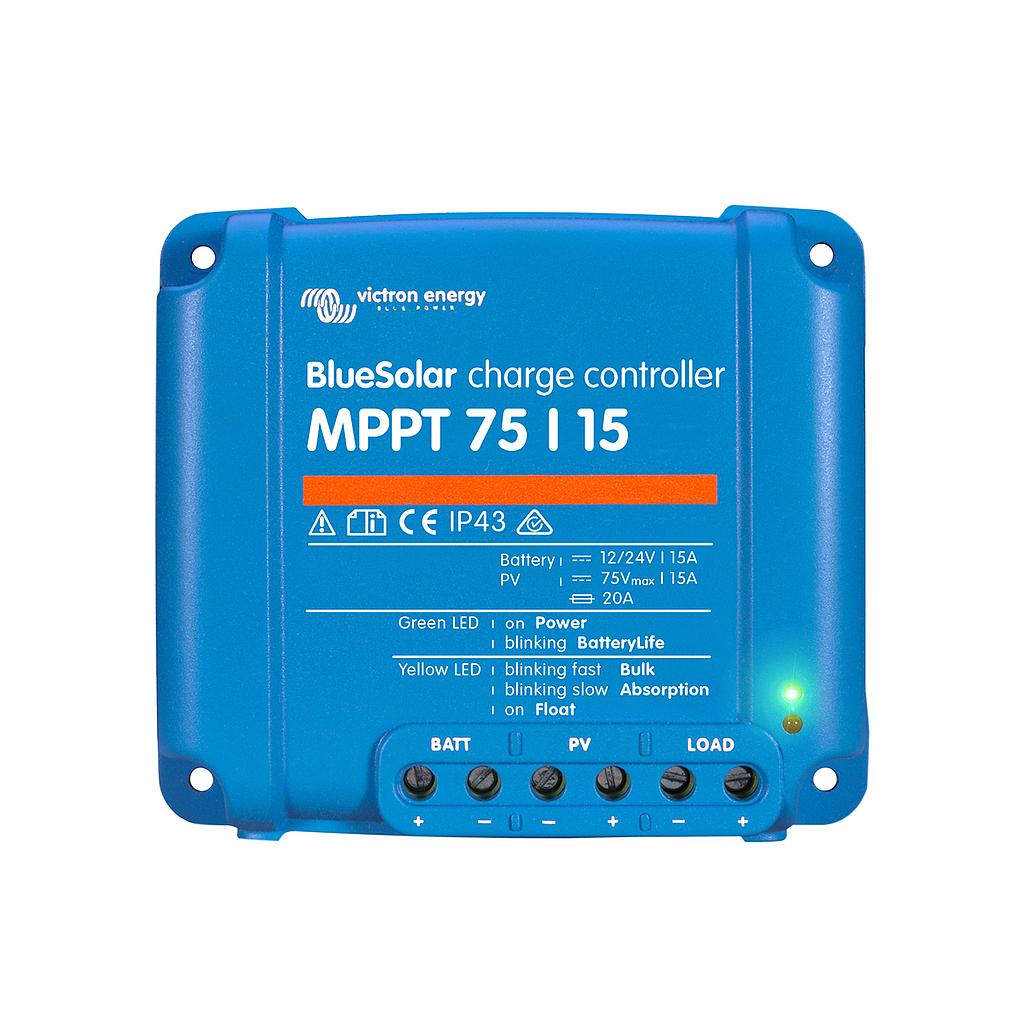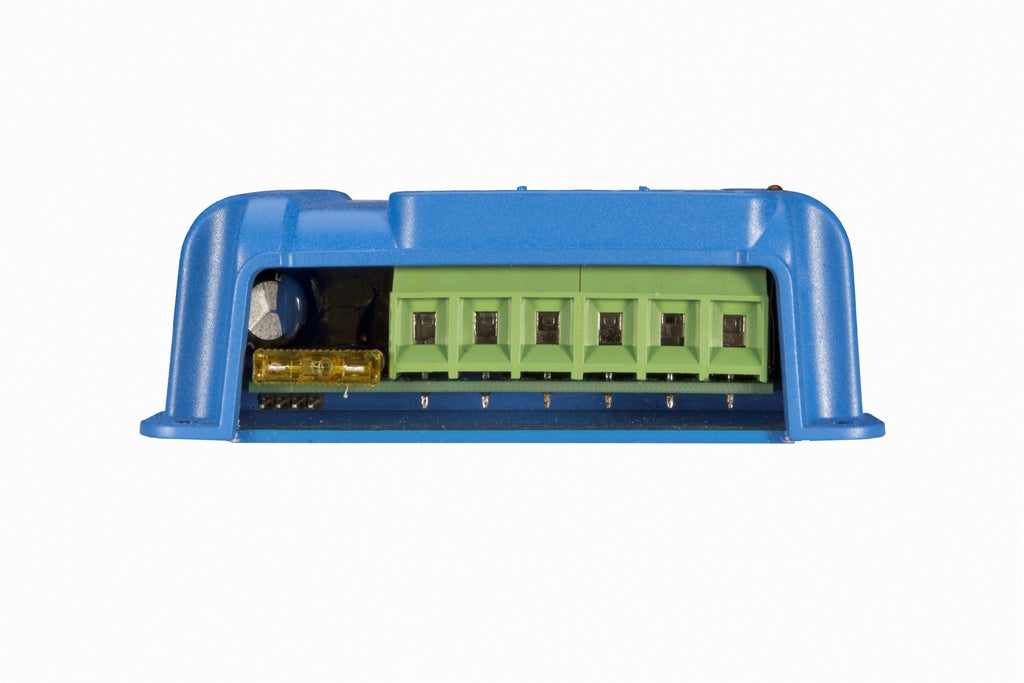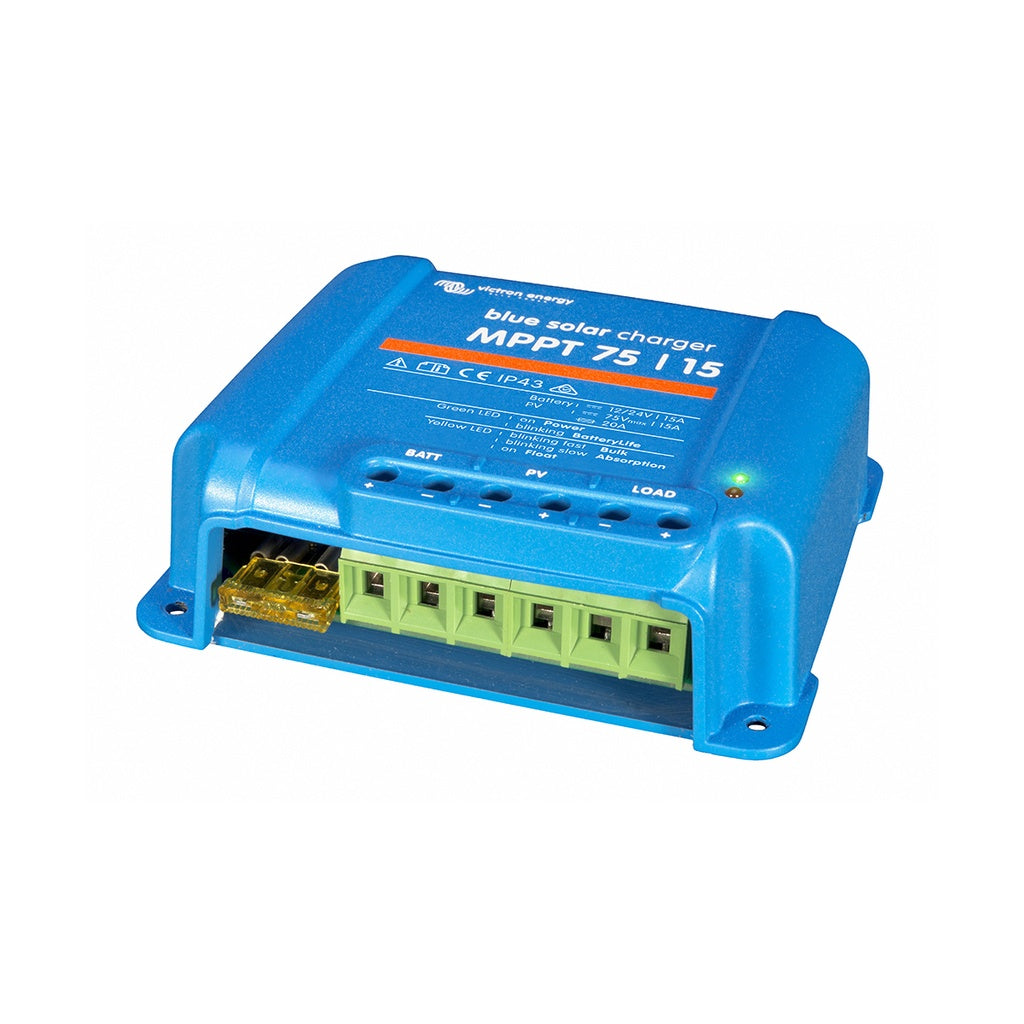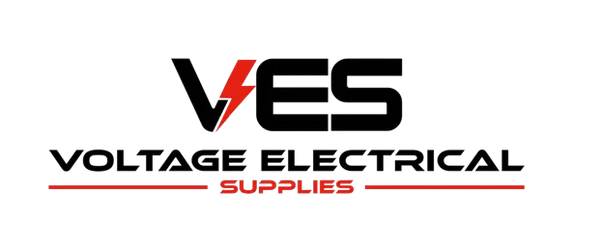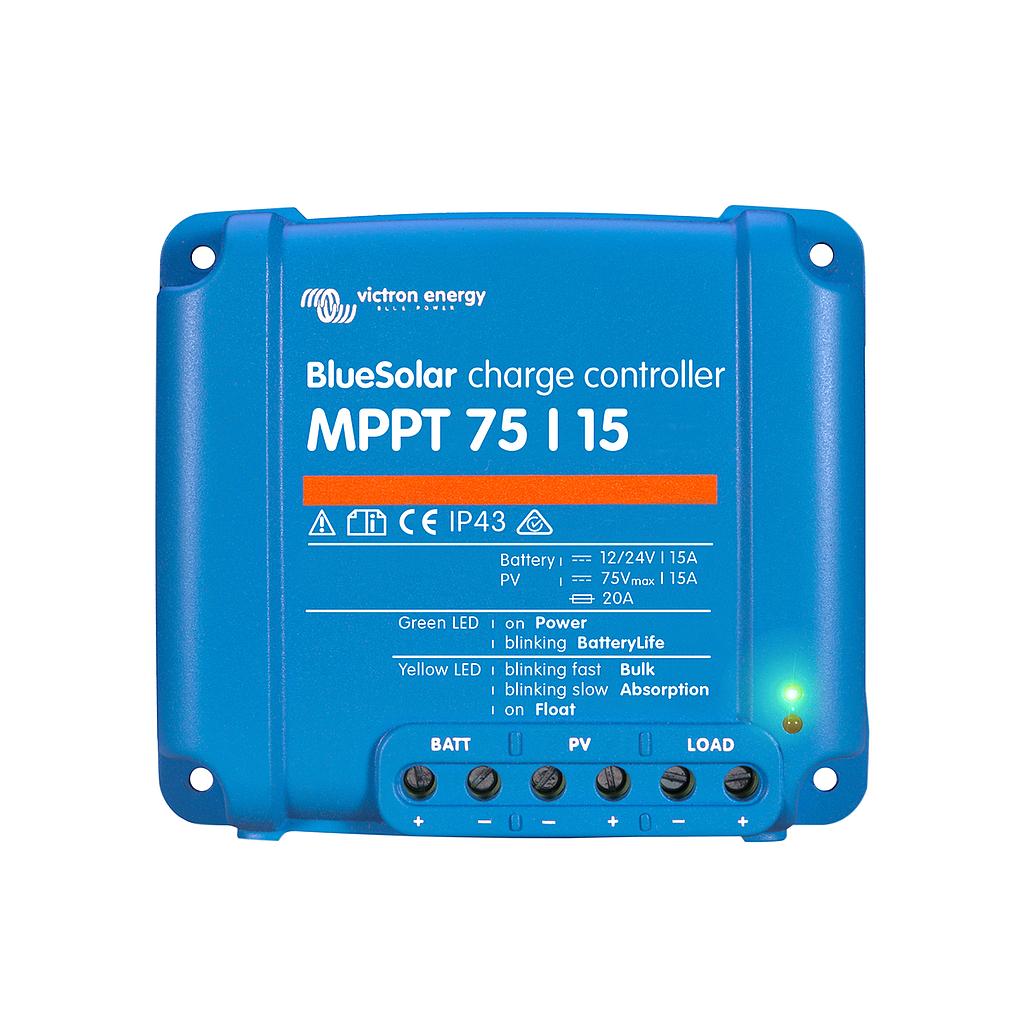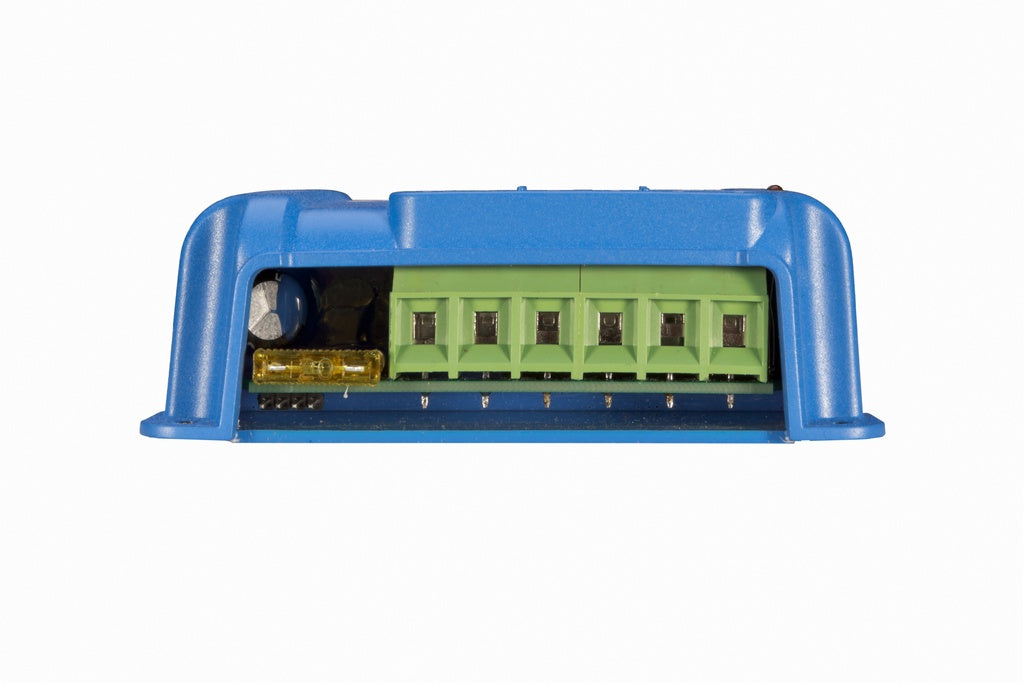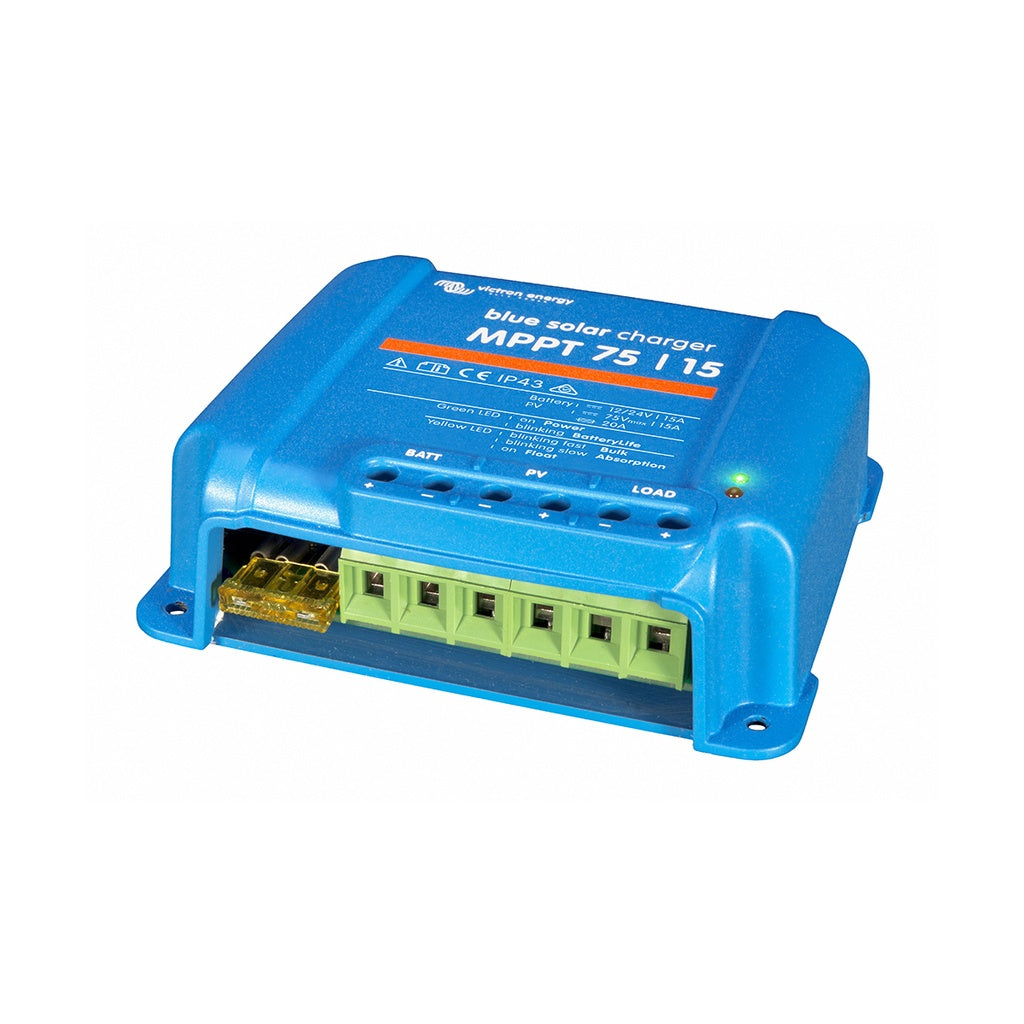Victron
Victron BlueSolar MPPT 75/15
Victron BlueSolar MPPT 75/15
SKU:SCC010015050R
Couldn't load pickup availability
Share
Victron BlueSolar MPPT Solar Charge Controller
Features:
- Maximum Power Point Tracking Solar Charge Controller
- Programmable Battery Charge with Intelligent Management
- 75V / 15A, Suitable for 12/24V Systems
- Remote Monitoring & Control
- Internal Temperature Sensor
- Direct Communication Port
- Real-Time Display via GX Device or Bluetooth-Enabled Smartphone
A solar charger gathers energy from your solar panels and stores it in your batteries. Using the latest, fastest technology, BlueSolar maximises this energy harvest, driving it intelligently to achieve full charge in the shortest possible time. BlueSolar maintains battery health, extending its life.
PWM and MPPT charge controllers are both widely used to charge batteries with solar power. The PWM controller is in essence a switch that connects a solar array to the battery. The result is that the voltage of the array will be pulled down to near that of the battery. The MPPT controller is more sophisticated (and more expensive): it will adjust its input voltage to harvest the maximum power from the solar array and then transform this power to supply the varying voltage requirement of the battery plus load. Thus, it essentially decouples the array and battery voltages so that there can be, for example, a 12V battery on one side of the MPPT charge controller and panels wired in series to produce 36 volts on the other.
It is generally accepted that MPPT will outperform PWM in a cold to temperate climate, while both controllers will show approximately the same performance in a subtropical to tropical climate. Besides performing the function of a basic controller, an MPPT controller also includes a DC to DC voltage converter, converting the voltage of the array to that required by the batteries, with very little loss of power.
An MPPT controller attempts to harvest power from the array near its Maximum Power Point, whilst supplying the varying voltage requirements of the battery plus load. Thus, it essentially decouples the array and battery voltages, so that there can be a 12V battery on one side of the MPPT charge controller and two 12V panels wired in series to produce 36 volts on the other. If connected to a PV array with a substantially higher nominal voltage than the battery voltage, an MPPT controller will therefore provide charge current even at very high cell temperatures or in low irradiance conditions when a PWM controller would not help much.
As array size increases, both cabling cross-sectional area and cable length will increase. The option to wire more panels in series and thereby decrease current is a compelling reason to install an MPPT controller as soon as the array power exceeds a few hundred Watts (12 V battery), or several 100 Watts (24 V or 48 V battery)
More Product Features:
Ultra-Fast Maximum Power Point Tracking (MPPT):
Especially in the case of a clouded sky, when light intensity is changing continuously, an ultra-fast MPPT controller will improve energy harvest by up to 30% compared to PWM charge controllers and by up to 10% compared to slower MPPT controllers.
Load Output:
Over-discharge of the battery can be prevented by connecting all loads to the load output. The load output will disconnect the load when the battery has been discharged to a pre-set voltage. Alternatively, an intelligent battery management algorithm can be chosen: see Battery Life. The load output is short-circuit proof. Some loads (especially inverters) can best be connected directly to the battery, and the inverter remote control is connected to the load output. A special interface cable may be needed, please see the manual.
Battery Life - Intelligent Battery Management:
When a solar charge controller is not able to recharge the battery to its full capacity within one day, the result is often that the battery will continually be cycled between a ‘partially charged’ state and the ‘end of discharge’ state. This mode of operation (no regular full recharge) will destroy a lead-acid battery within weeks or months. The Battery Life algorithm will monitor the state of charge of the battery and, if needed, day by day slightly increase the load disconnect level (i.e. disconnect the load earlier) until the harvested solar energy is sufficient to recharge the battery to nearly the full 100%. From that point onwards the load disconnect level will be modulated so that a nearly 100% recharge is achieved about once every week.
Programmable Battery Charge Algorithm:
See the software section on our website for details
Day/Night Timing and Light Dimming Option:
See the software section on our website for details
Programming, Real-Time Data and History Display Options:
Colour Control GX or other GX devices: see the Venus documents on our website. A smartphone or other Bluetooth-enabled device: VE.Direct Bluetooth Smart dongle needed.
Applications

Marine

RV's

Caravans

Off-Grid Systems

Tiny Houses

Cabins
More about Victron:
Victron Energy has a strong, unrivalled reputation for technical innovation, reliability, and build quality. Their products are widely considered to be a professional choice for independent electric power. Efficiently combining two or more distinct power sources is what they do best. Their products include sinewave inverters, sinewave inverters/chargers, battery chargers, DC/DC converters, transfer switches, battery monitors and more.
